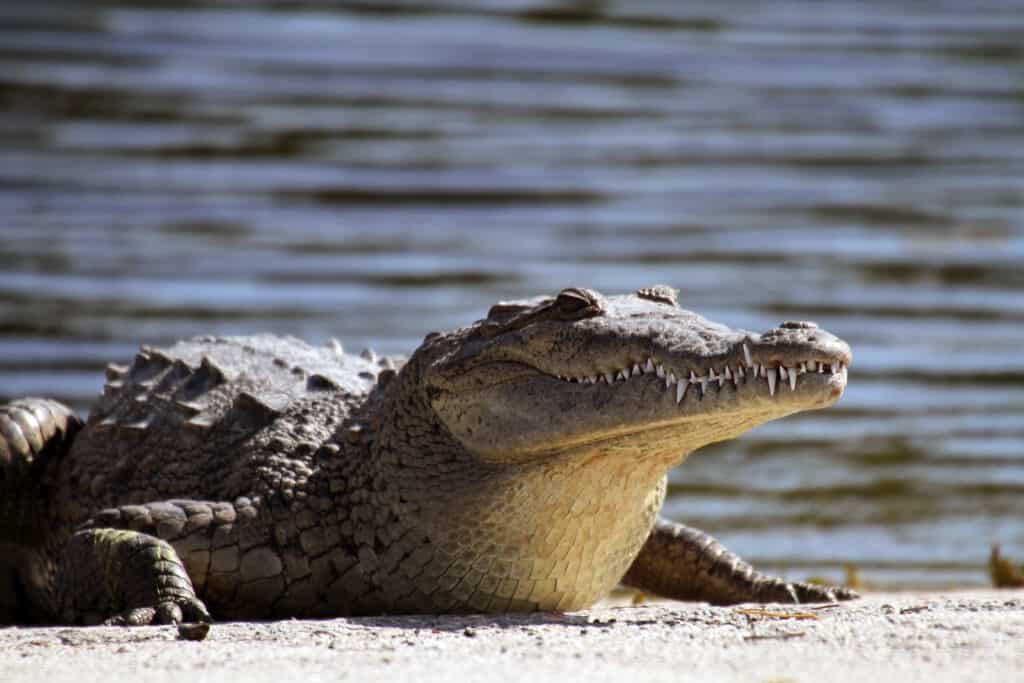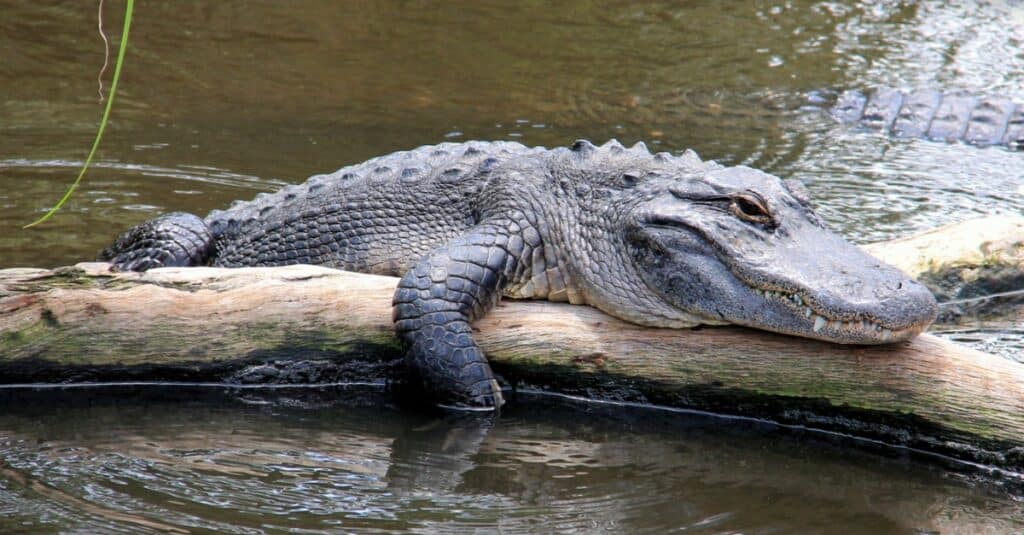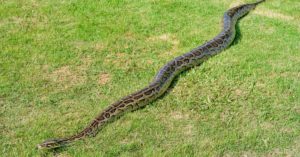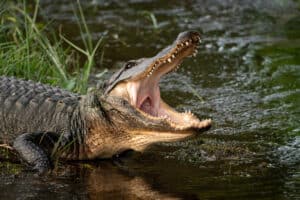Alligators are some of the most resilient creatures around, but they do have limits! In fact, there is such a distinct boundary across Georgia that alligators refuse to travel north of it. Is there some weird biological factor that keep them from traveling certain distances, or is it something else entirely? Let’s combine geography and biography today in order to discover why alligators won’t cross Georgia’s Fall Line. The answer is actually pretty simple.
What Is Georgia’s “Fall Line”?
Georgia’s Fall Line is an ancient geological boundary that was once the shoreline of the Atlantic Ocean, but is now the boundary between the Piedmont and Coastal Plains.
The world used to look a lot different than it does now. Go back a few million years, and we probably wouldn’t recognize much of the landscape that we are familiar with today! This change over time isn’t always possible to see on the surface, but thankfully, scientists have ways of learning about the past without us having to have seen it ourselves. One of the best examples of that is the Georgia Fall Line.
A long time ago, the Atlantic Ocean extended much further into modern-day Georgia (and the rest of the east coast). Although the shoreline has since receded, that period has left its mark on the region. The Fall Line is a boundary of different rocks that marks the place where the ocean used to be. Even more, it differentiates where two distinct regions in Georgia start and end: the Piedmont and Coastal Plain. The Piedmont is a hilly, more northern region of the state, while the Coastal Plain is a flatter and milder region of the state. This difference in geology and weather is what makes all the difference for alligators.
What Animals Live In and Around the Fall Line?
Marsh rabbits, mink, and muskrats call the swamps and wetlands to its south, home. North America’s smallest species of frog, the little grass frog also lives here feeding on hapless arthropods as does the eastern indigo snake, which is the nation’s largest snake species.
North of the line chipmunks can be found nibbling on eggs and fruit, while gray foxes hunt rabbits, birds, and mice. There is an abundance of bats too in caves found in the Appalachian plateau, while deer mice and smokey shrews can be found in the Blue Ridge.
Why Won’t Alligators Cross the Fall Line?

Alligators don’t like crossing the geological boundary across the state because the region north of the Fall Line has colder winters, less sun, and less habitat for them.
Alligators are cold-blooded creatures, meaning they rely on their environment to heat and cool their bodies. This is a great adaptation, as it allows them to use less energy and consume less energy than producing heat from within (like mammals). In warm climates, being cold-blooded means you need less food compared to your competitors, a distinct advantage. The problem arises, however, when the environment goes through extended periods of cold weather, and cold-blooded creatures can’t warm themselves.
This is the main reason that alligators don’t head north of the Fall Line. The Fall Line is also the place where the weather starts to change. The Piedmont region is quite temperate, but in the American South, Piedmont still experiences large temperate swings for extended portions of the year. Plainly, the winters are too long and too cold for alligators to survive effectively.
On the contrary, the Coastal Plains experience much milder winters for two reasons: their more southerly location and the ocean. The further south you move toward the equator, the more stable the heat is. Additionally, the ocean helps to regulate temperate more effectively than in the Piedmont region. Even more, the Coastal Plain is much flatter, meaning there are low-lying swamps and slow-moving waterways, an alligator’s favorite place to hang out. Altogether, the Coastal Plain is warmer, has fewer extended periods of cold, and has more habitat that an alligator would find suitable. Where is this Coastal Plain found? South of the Fall Line.
How Do Alligators Survive in Cold Weather?

American crocodiles don’t tolerate the cold as well as American alligators do.
©iStock.com/GriffinGillespie
Even still, most of Georgia, including where alligators are found, experiences periods of cold. In fact, some places may even freeze over during portions of the year! Thankfully, alligators have it all figured out. Alligators are among the best of all the crocodilians when it comes to cold tolerance, and significantly outpace their cousins, the American crocodile, when it comes to tolerating frigid temps.
The best trick up an alligator’s sleeve when it comes to survival is known as brumation. Brumation is essentially a form of hibernation, but for reptiles. Once an alligator begins brumating, they use less energy and slow its body’s important functions. This is so effective that alligators can survive in a frozen pond with only the tip of their nose sticking above the water.
What Is the Farthest North That Alligators Will Go?

North Carolina is the most northerly state that alligators live.
©iStock.com/Nikola Art
In Georgia, alligators generally don’t go further north than the Fall Line. The line extends from Columbus all the way through to Augusta at the eastern border of the state, running through Macon and Milledgeville. Alligators are occasionally found north of this line, but they are almost always pets that were released by their owners.
In the United States, alligators live as far north as North Carolina. In North Carolina, a similar Fall Line is present that marks the boundary for the reptiles. The Piedmont region is much too cold for alligators, however, and they can only be found across the swamps and coastal regions in the most easterly portions of the state.
The photo featured at the top of this post is © iStock.com/Cindy Larson
Thank you for reading! Have some feedback for us? Contact the AZ Animals editorial team.






